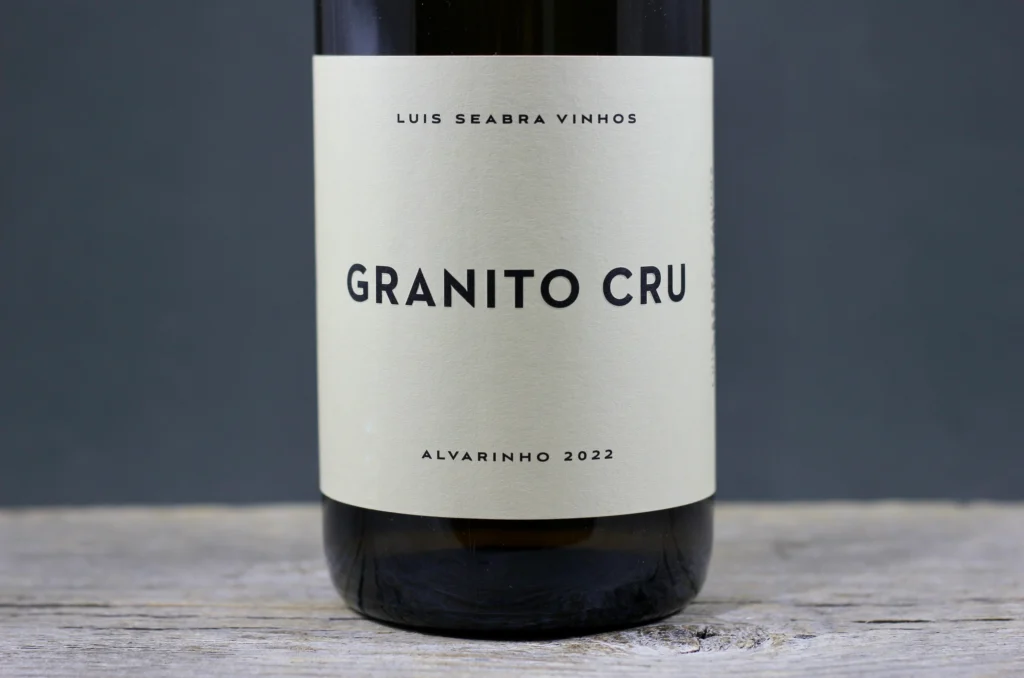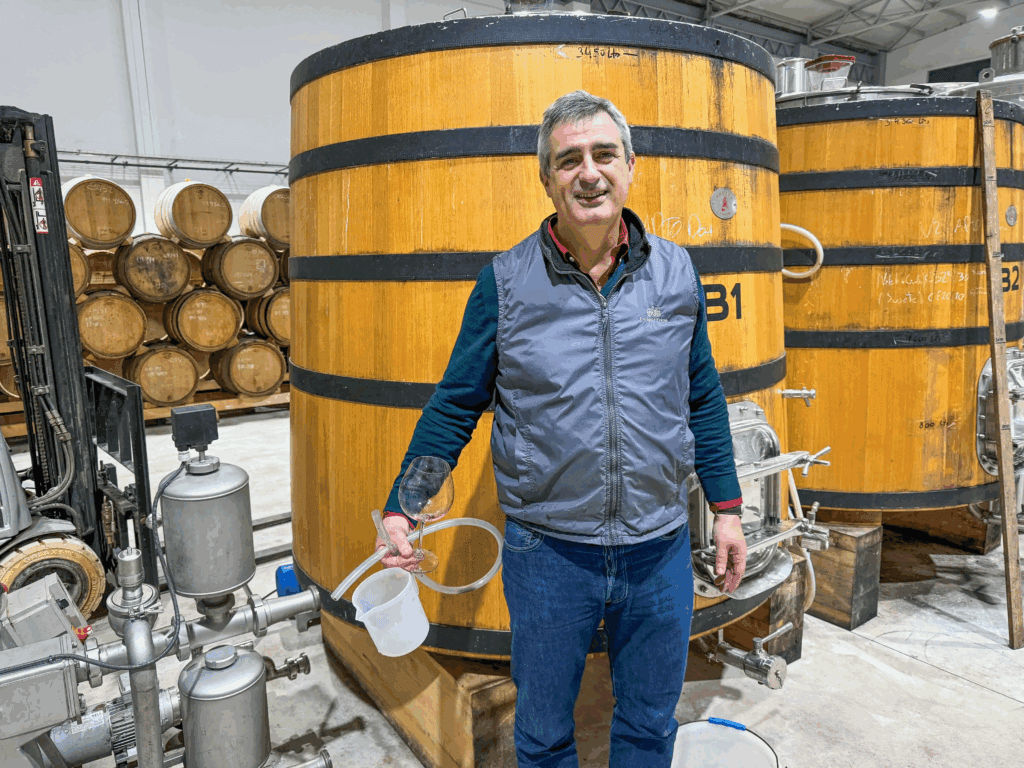
Luis Seabra (1973), studied Agronomy at UTAD and Winemaking (MA) at UCP. Worked briefly in the field as teacher, researcher, and consultant; as winemaker at Niepoort (2004-2012); founded LS Vinhos in 2013.
Location
…the mission is to create wines that tell about the place where they are coming from, made with a minimal intervention philosophy, respecting their nature and character. We want our wines to be able to show the different soils where the vineyards are planted, the different altitudes and exposures, their differences, and similarities. – luisseabravinhos.com
Luís Seabra is a prominent Portuguese winemaker known for his terroir-driven, minimal-intervention wines and is considered a leader of the “New Portugal” wine movement. After a celebrated career, including a decade as the head winemaker for Dirk Niepoort, he established his own winery, Luís Seabra Vinhos, in 2013 – www.oleobrigado.com/winemaker/luis-seabra
Career and Background
Seabra studied viticulture at a university in northern Portugal and initially worked as a teacher and soil researcher before moving into winemaking. His most famous role prior to starting his own project was at Niepoort, where, starting in 2004, he was instrumental in developing their revolutionary still wine program in the Douro, a region historically dominated by fortified Port wine. In 2012, he left Niepoort to create his own label, driven by the desire to produce wines under his own name and philosophy. Though he didn’t grow up in a winemaking family, his father’s family is from the Douro, the region where he has made his mark. – Luis Seabra (LinkedIn); For the Love of Port (2010)
Winemaking Philosophy and Style
Seabra’s primary goal is to create wines that clearly express their specific place of origin, or terroir. His approach is characterized by minimal intervention in both the vineyard and the cellar. He champions fresh, elegant, and age-worthy still wines, challenging the regional tradition of producing overripe, powerful wines.
Key aspects of his winemaking include:
- Terroir Focus He meticulously identifies soil types in his vineyards to create wines that are transparent to the soil. His “Xisto Cru” wine, for example, is named after the schist (xisto) soils of the Douro.
- Minimal Intervention He uses spontaneous fermentation for his white wines, which can take months to complete, and employs little to no temperature control. The goal is to produce an unadorned, or “raw” (cru), style of wine.
- Harvest and Fermentation For his white blends, he often harvests all grape varieties at once to achieve a balance of flavors and acidity. The white wines typically undergo full malolactic fermentation to enhance stability and texture.
- Aging He favors aging wines in larger, used oak barrels, and is incorporating concrete tanks into his new winery to allow for maturation with gentle oxygen exposure.
Wine Portfolio
Seabra produces wines from several Portuguese regions, including the Douro, Dão, and Vinho Verde. His wines are often categorized into distinct series:oleobrigado
- Cru Series Meaning “raw,” these wines come from singular terroirs and are intended to be pure expressions of their specific vineyard sites
- Ilimitado Series Modeled after the Burgundian village system, these red and white wines represent specific districts within the broader Douro region
- Mono Series This line is dedicated to single-varietal expressions, often featuring unexpected grape varieties. One notable example is the “Mono A,” made from the Alfrocheiro grape.
His Granito Cru Alvarinho from Vinho Verde and his white blend from Dão are among his most sought-after wines, recognized for their complexity and aging potential. He is praised for making some of Portugal’s most compelling wines, with a vivacious, crisp, and energetic style that defies the traditional profile of the Douro
Wines
Seabra takes a “micro” approach, working with just 8 hectares total across three regions: Douro, Vinho Verde and Dao.
- Dão
- Granito Cru Branco: Encruzado, Bbical, Sercial
- Mono A: Alfrocheiro
- Douro
- Xisto Cru Tinto – Rufete, Touriga Franca, Tinta Carvalha, Alicante Bouchet, Tinta Roriz, Donzelinho Tinto, Malvazia Preta.
- Xisto Cru Branco – Mainly Rabigato, remaining balance field blend of Códega, Gouveio and Viosinho Dozelino Branco
- Xisto Illimitado Tinto
- Xisto Ilimitado Tinto
- Mono Castelão
- Indie Xisto – Tinta Roriz, Touriga Franca, Tinta Amarela, Rufete, Tinta Barroca and other indigeneous varieties
- Vinho Verde

Sources
Articles
- Where Port Reigns, Unfortified Wines Undergo a Stylistic Evolution, Eric Asimov, The New York Times, July 2019

- The wines of Luis Seabra, Portugal, Jamie Goode, Wineanorak, Aug 2021
- Dealing with Change in the Douro, Alder Yarrow., Vinography, Oct 2024

- Top 100 Wines of Portugal 2025: Heritage, Innovation and the Quest for Drinkability, James Suckling
- From Mexico to Mongolia: the up-and-coming wine regions of 2025, Jancis Robinson, Financial Times, January 2025
Podcast
Luis Seabra is the proprietor and winemaker at Luis Seabra Vinhos, producing dry wines from the Douro Valley and the Vinho Verde regions of Portugal.
Luis discusses his beginnings working as a plant specialist at an university, his work doing vineyard trials for the Portuguese government, the nine years that he made dry wines at the house of Niepoort, and on to the founding of his own winery. Over the course of the interview Luis takes up all kinds of topics relating to Portuguese wine, such as vine material, grape varieties, the soil types in different areas, historical wine blending practices, and the winemaking norms in differnet parts of the country, as well as how those have changed over time. He explains the evolution in his own thinking concerning both winemaking and vineyard practices. Luis clearly illustrates what he means by contrasting his own thoughts and techniques with the dominant thinking in the surrounding area. Those wanting a deep dive into topics like whole cluster, skin maceration, pressing, and élevage, will find Luis a capable guide. He also discusses the different character of recent vintages for his own wines.
